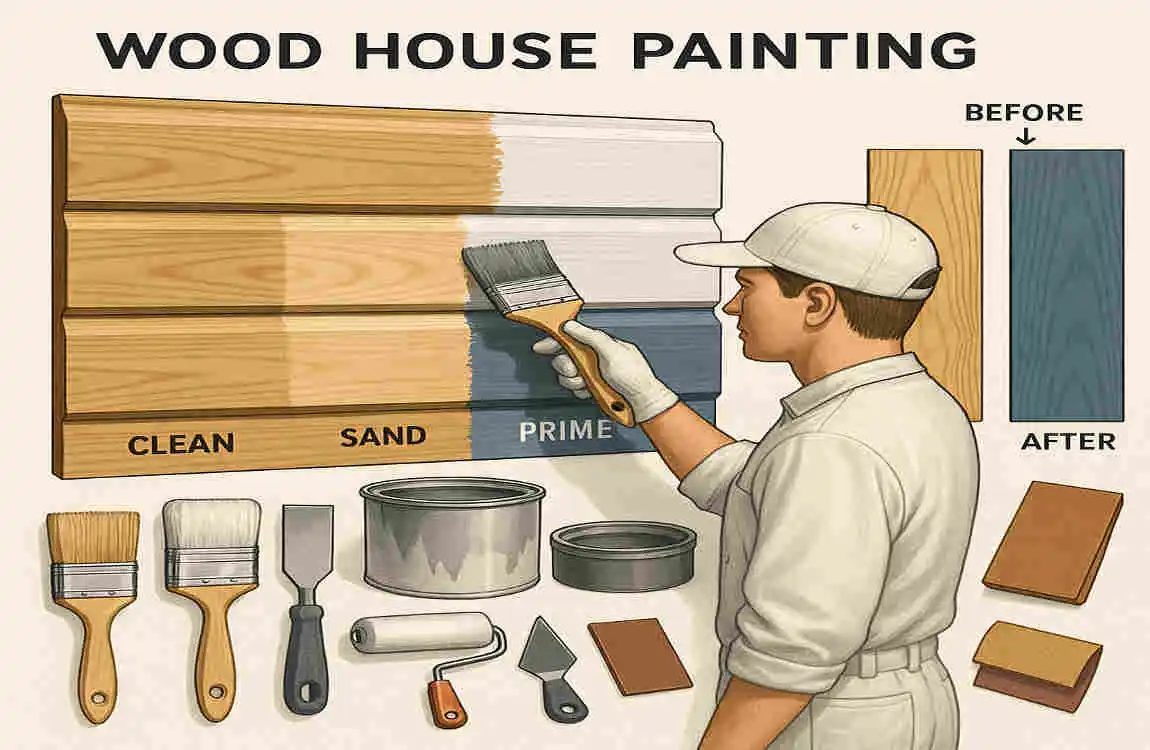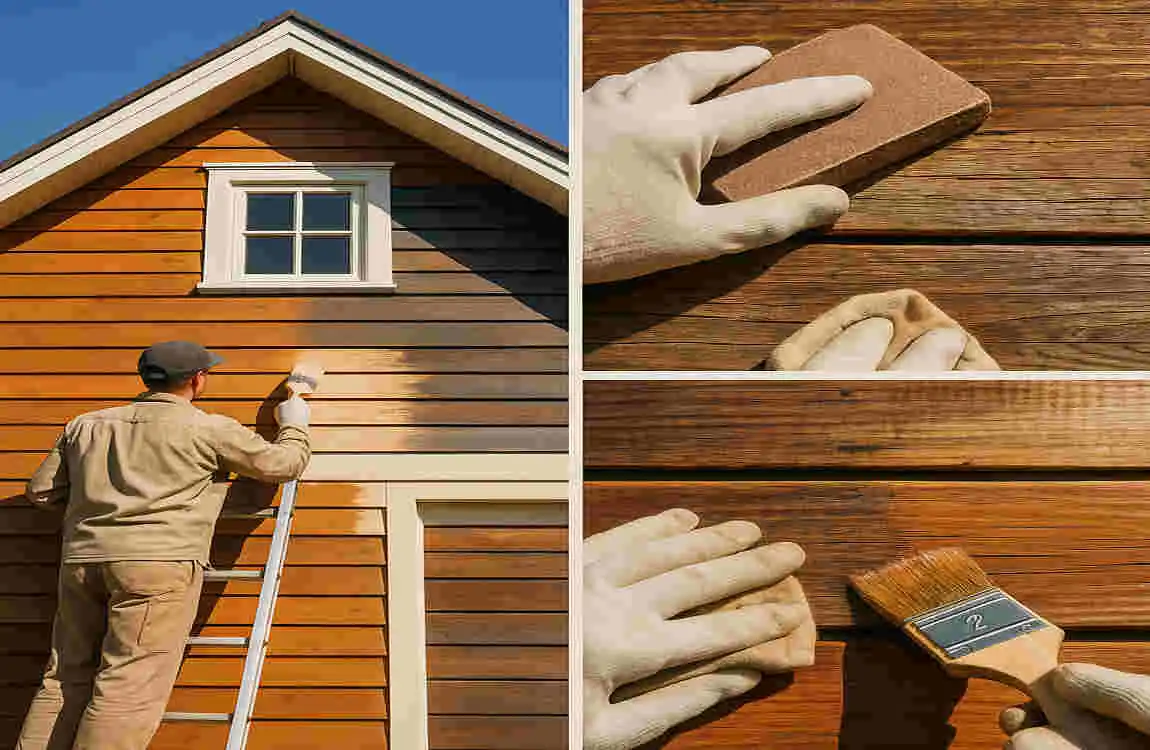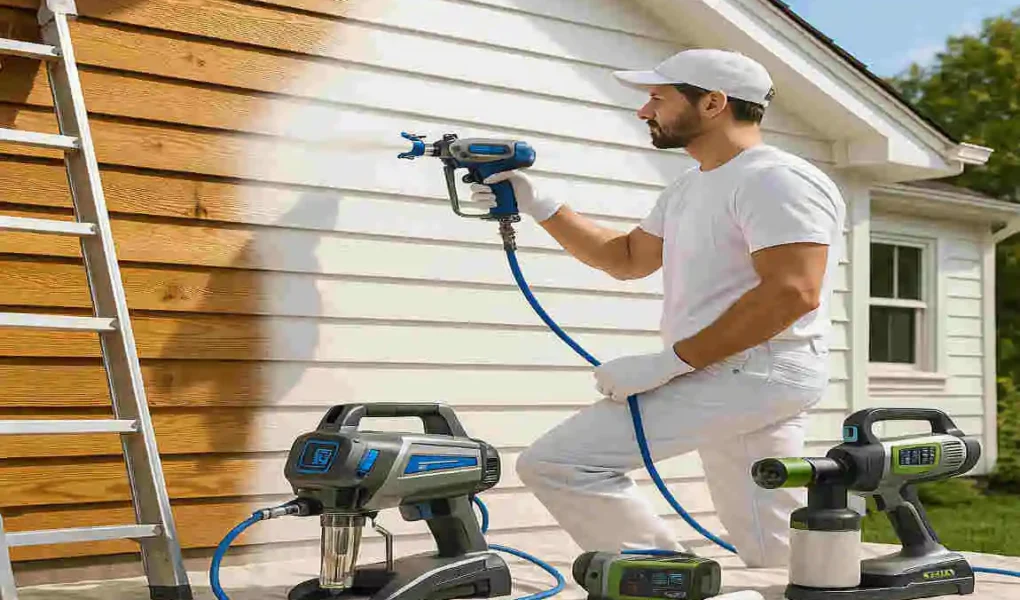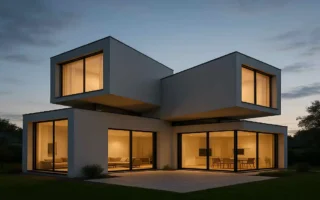Painting a wood house can be a rewarding task that not only enhances the curb appeal of your home but also protects it from the elements. However, achieving a flawless finish requires more than just a brush and a can of paint. Whether you’re a DIY enthusiast or someone looking to hire a professional, understanding the proper techniques and using the best tools is crucial.
Why Painting a Wood House Is Important

Wood is a natural material that’s prone to wear and tear over time. Without proper maintenance, it can suffer from rot, cracking, and peeling paint. A well-executed paint job acts as a protective barrier, shielding your home’s exterior from moisture, UV rays, and harsh weather conditions.
Moreover, painting your wood house isn’t just about protection—it’s also about aesthetics. A fresh coat of paint can instantly elevate the look of your home, making it stand out in the neighborhood. By following the steps outlined below, you’ll ensure your wood house remains both durable and visually appealing for years to come.
Understanding Wood House Painting Basics
Painting a wood house is different from painting other surfaces. Wood has unique properties that require special attention, from its grain and texture to its tendency to expand and contract with temperature changes. Let’s dive into the basics you need to know.
Types of Wood Used in House Exteriors
Different types of wood are commonly used for home exteriors, and each has unique characteristics that affect how it interacts with paint:
- Cedar: Known for its natural resistance to decay, cedar requires paint that enhances its durability without trapping moisture.
- Pine: A softer wood that needs a good primer to prevent knots from bleeding through the paint.
- Redwood: Highly durable but expensive, redwood paints well and holds color for a long time.
Understanding the type of wood your house is made of will help you choose the right paint and techniques for the best results.
Common Challenges When Painting Wood Houses
Painting wood comes with its share of challenges. Here are some common issues homeowners face:
- Peeling Paint: Often caused by insufficient surface preparation or using incompatible paint.
- Weather Damage: Rain, snow, and UV rays can take a toll on wood, making it challenging to hold paint.
- Wood Grain and Texture: Uneven surfaces may cause paint to settle poorly.
Advancements in Paint Technology (2025)
Thanks to innovations in paint technology, painting a wood house is now easier and more effective than ever. Modern paints are designed to be:
- Eco-Friendly: Low-VOC (Volatile Organic Compounds) paints are better for the environment and your health.
- Weather-Resistant: Advanced formulas offer better resistance to cracking, peeling, and fading.
- Self-Priming: Some paints eliminate the need for a separate primer, making the process faster.
These advancements ensure that your paint job not only looks great but also lasts longer, even in harsh conditions.
Essential Tools and Materials for Painting a Wood House
Having the right tools and materials is half the battle when it comes to painting your wood house. Below is a list of everything you’ll need.
Tools You’ll Need
- Brushes: Ideal for detailed work and corners.
- Rollers: Best for covering large, flat surfaces quickly.
- Sprayers: Advanced sprayers save time and ensure an even coat.
- Scrapers: To remove old, peeling paint.
- Sander: For smoothing rough surfaces.
- Ladders and Scaffolding: To reach high areas safely.
Choosing the Right Paint for Wood Houses
In 2025, there are several types of paint available for wood exteriors. Here’s a quick comparison:
Paint Type Benefits Best For
Acrylic Paint Long-lasting, flexible, and UV-resistant All kinds of wood
Oil-Based Paint Durable and water-resistant High-moisture areas
Latex Paint Quick-drying and eco-friendly DIY projects
Eco-Friendly Paints Non-toxic and sustainable Environment-conscious homes
Why Primer Is Essential
Using a primer is critical for wood surfaces because it:
- Seals the wood to prevent moisture absorption.
- Ensures better adhesion for the paint.
- Blocks stains and knots from bleeding through.
Step-by-Step Process to Paint a Wood House
Now that you have the tools and materials ready, let’s get into the step-by-step process of painting your wood house.
Preparing the Wood Surface
Proper preparation is the foundation of a flawless paint job. Follow these steps:
- Inspect and Repair: Check for any damaged or rotten wood. Replace or repair as needed.
- Clean the Surface: Use a pressure washer or scrub with soapy water to remove dirt, mildew, and grease.
- Sand the Wood: Smooth the surface using a sander to help the paint adhere better.
- Remove Old Paint: Use a scraper or chemical paint remover to eliminate peeling or flaking paint.
Priming the Wood
Priming is a step you should never skip when painting wood. Here’s how to do it right:
- Choose the Right Primer: Opt for one designed specifically for wood exteriors.
- Apply Evenly: Use a brush or roller to apply primer in thin, even layers.
- Allow Proper Drying Time: Follow the manufacturer’s instructions for drying times before painting.
Painting Techniques for a Flawless Finish
The actual painting process requires patience and technique. Here are some expert tips:
- Brush, Roller, or Sprayer?: For detailed areas, use a brush. Rollers are excellent for large surfaces, while sprayers offer a smooth, professional finish.
- Paint with the Grain: Always follow the natural grain of the wood for better results.
- Avoid Common Mistakes: Don’t overload your brush or roller; apply paint in thin, even coats.
For best results in 2025, consider using advanced sprayers that deliver a fine, even mist and reduce overspray.
Maintenance Tips to Keep Your Wood House Paint Looking Fresh

After all the hard work, you’ll want your paint job to last. Here’s how to maintain it:
- Routine Cleaning: Wash your house exterior once or twice a year to remove dirt and mildew.
- Inspect for Damage: Look for chips, cracks, or peeling paint and touch up as needed.
- Protect Against Weather: Use protective coatings to shield your paint from UV rays and moisture.
Common Mistakes to Avoid When Painting Wood Houses
Avoid these common mistakes to ensure a flawless paint job:
- Skipping Surface Preparation: Failing to clean or sand the surface will result in poor paint adhesion.
- Using the Wrong Paint: Always choose paint designed for wood exteriors.
- Painting in Bad Weather: Avoid painting on rainy or humid days.
- Over-Applying Paint: Thick layers take longer to dry and can lead to uneven results.
Expert-Recommended Paint Brands and Products for 2025
When it comes to painting wood houses, quality matters. Here are some top brands to consider:
- Sherwin-Williams: Known for their high-performance exterior paints.
- Behr: Offers durable, weather-resistant paints.
- Benjamin Moore: A favorite for its eco-friendly options and vibrant colors.




